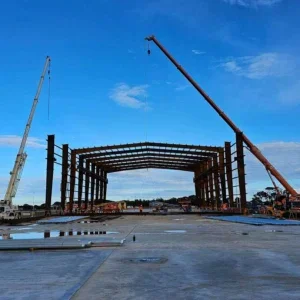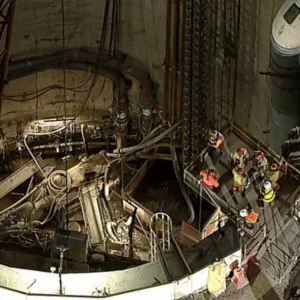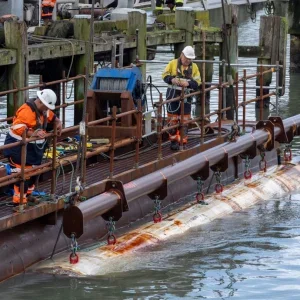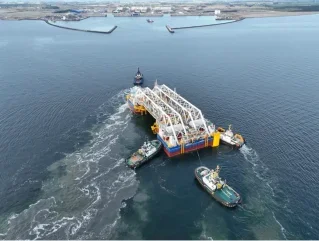
The immersion pontoon, which is two vessels that can be assembled and disassembled, has been delivered to the tunnel contractor, Femern Link Contractors (FLC). It sailed to Rødbyhavn from the Crist shipyard in Gdynia, Poland.
Ivy 1 and Ivy 2 have been designed to support the Fehmarnbelt tunnel elements during their journey from the work harbour. When the 217m-long elements leave the factory, they are light enough to float. Prior to the immersion process, however, several thousand tonnes of ballast concrete will be added to make the elements heavy enough to be immersed in the dredged tunnel trench on the seabed. From here the tunnel element will only be supported by the two immersion pontoons, which will serve as the tunnel element’s ‘bathing wings’.
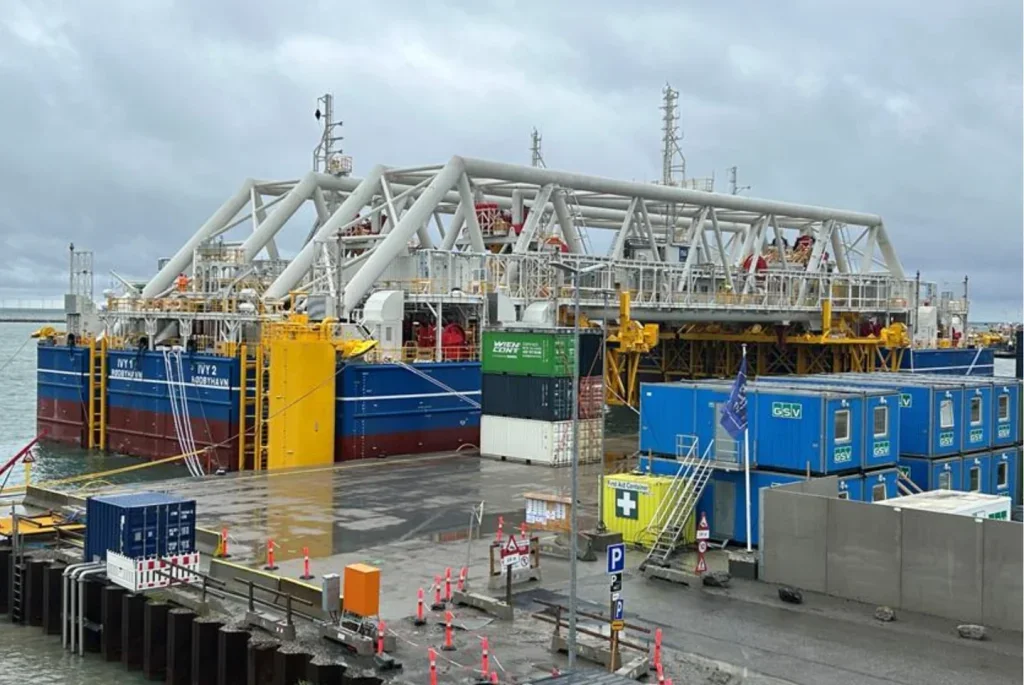
Ivy 1 and Ivy 2, operated by a 22-person crew, will support opposite ends of each standard element. However, the special elements, which are significantly shorter, will be supported by the two vessels coupled together.
The immersion pontoon has two main functions: to support the elements and to control the immersion process. The vessel contains winches with over 200km of steel wire and a control room from where the immersion process will be managed.
“It will require a steady hand and some highly advanced equipment to immerse the tunnel elements with the precision we require. Our immersion pontoon, therefore, has been specially built for this purpose,” said Femern construction marine manager Baris Nacar.
Additional technical equipment will be installed over the coming months. The vessel will then be tested at sea before the immersion of the first tunnel element can being.



